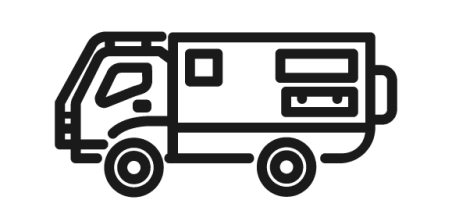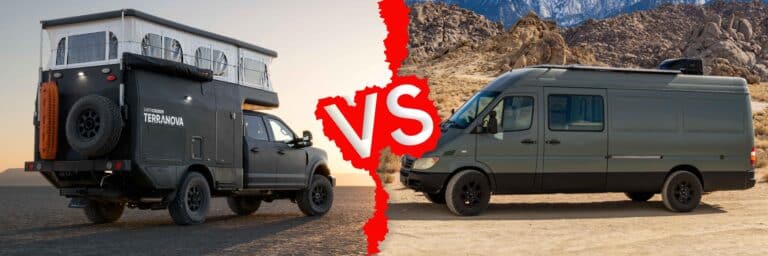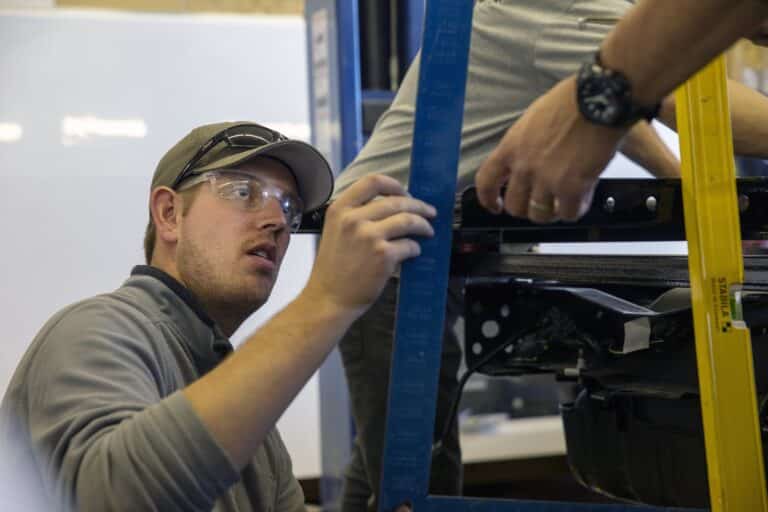At some point, you may find yourself needing to ship your EarthCruiser, whether it’s for moving overseas, transporting it to Cape Town for the start of an epic African safari, or for hopping the Darien Gap on your way to the southern tip of the Americas. While the logistics of such an endeavor can seem daunting, you can take comfort in knowing EarthCruisers were designed with this need in mind.

With Covid-19 continuing to disrupt shipping worldwide, it is advisable to plan vehicle shipping as far ahead as possible. Your first step will be to determine your ports of departure and arrival, manner of shipping, and the date when you’ll need to have your vehicle at your destination. Keep in mind when determining when your EarthCruiser will need to arrive that it can take anywhere from a day to a week for your vehicle to clear customs upon arrival.
You may not have flexibility in choosing which ports your vehicle will depart and arrive, but if you do, a bit of research can save you time, money, and headache. Some shipping companies offer door-to-door service where your vehicle will be picked up from your home, transported by truck to the departure port, picked up at the arrival port, and delivered directly to your desired destination. While convenient, this level of service can be expensive.
Roll-on, roll-off shipping, often abbreviated as “RORO,” is often the least expensive shipping option. With this method, your vehicle will be secured to the desk of the shipping vessel without the protection of a container. This means your vehicle is exposed to the elements and is in greater danger of damage and theft. Often these vessels visit multiple ports, which can mean a longer total time to your destination. The advantage of this option is its price and the large number of ports that serve these vessels.
Exclusive container shipping, also called sole container shipping, is the most expensive option, but it affords you the security of shipping your vehicle protected from the elements and from the potential of theft and damage. These vessels often travel the most direct route between major ports and can be the quickest option, though the number of ports that have the capabilities of handing containers is limited.

Shared container shipping, also known as consolidated shipping, is when your EarthCruiser shares a container with other vehicles. This can save you money, but your container will not be delivered until it is full, resulting in longer transit times and complex scheduling. Standard containers come in 20 and 40-foot lengths, the length of your vehicle will determine if this option is feasible.
After you have roughed out these parameters, you can begin to shop for a shipping company, also known as a freight forwarder. Most companies are happy to provide quotes for no cost and no commitment. Unfortunately, the last few years have seen a rise in shipping costs due to covid-19 impacted global supply chains and fuel prices, increased port congestion, and shipping container shortages. It pays to shop around. Pricing and timing of shipping fluctuate with the market, and sometimes you may not be able to get a firm quote on pricing or timing until a few weeks before departure.
Make sure whichever company you hire is licensed, bonded, and insured and works exclusively with freight carriers who are also licensed, bonded, and insured. Carefully read the fine print detailing which fees and charges are included and what you’ll be on the hook for. Most shipping companies will include in their quote Origin and Destination Terminal Handling Charges, Customs Duties, the issue of a House Bill of Lading, and the hiring of an agent to get your vehicle through customs. Still, it’s wise to double-check for their inclusion.
It is recommended to purchase supplemental insurance, even if your shipping company does not require it. You may find your car insurance company offers such coverage, or it may be possible to purchase it from the shipping company or through a third party.
Next, it’s time to gather the appropriate paperwork required for shipping. You’ll need an original or certified copy of the Certificate of Title for your vehicle. Your shipping company may also ask for your registration, proof of insurance, a list of everything packed inside your vehicle, and a copy of your passport. This is a great time to thoroughly research what paperwork you will need to drive your EarthCruiser in your destination legally and what paperwork may be required at any borders you intend to cross. You may need to obtain local insurance, cross-border permits, roadworthy certificates, an International Driving Permit, and a Carnet de Passages en Douane. The most accurate place to find out what paperwork is required is directly through the Consulate of your destination.
You can now prepare your vehicle for shipment. Your shipping company will let you know how much fuel is allowed to be in your tanks during shipment – typically less than a quarter tank. You will need to ensure your vehicle arrives at the departure port within the window of time specified by the shipping company. Arriving outside of this window can result in additional fees or delays.
Many countries monitor shipments for the introduction of invasive species and agricultural pests. To reduce the possibility of delays and fines, it’s best to present your vehicle washed and free of dirt with no fresh food items on board.
After your EarthCruiser has been loaded onto a vessel and that ship has departed, you will receive an Ocean Freight Bill of Lading from your shipping company. This will include the details you’ll need to track the vessel your vehicle is on. Often it is possible to track your vehicle live as it makes its way across the ocean.
Once your vehicle has arrived at its destination port, your shipping company will arrange for a Release Agent to receive your vehicle. This agent will clear your vehicle through import customs and schedule it for pickup or delivery. Upon receipt of your vehicle, immediately inspect it for damages or missing items. Ensure it is safe to drive by performing a pre-trip inspection, including checking tire pressure and fluid levels. Walk around the vehicle and look underneath it to ensure nothing has come loose during shipping. Finally, enjoy having your EarthCruiser on a whole new continent to explore!










